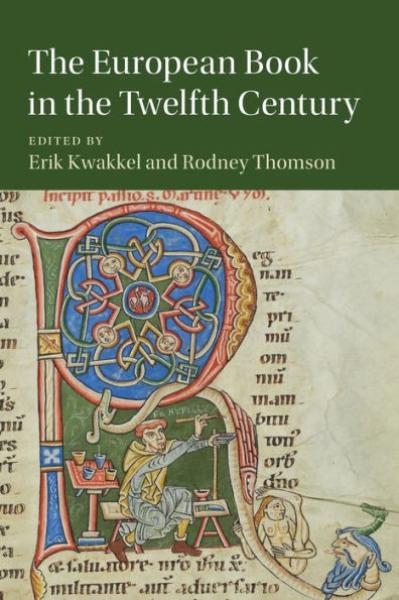Description
The 'long twelfth century' (1075-1225) was an era of seminal importance in the development of the book in medieval Europe and marked a high point in its construction and decoration. This comprehensive study takes the cultural changes that occurred during the 'twelfth-century Renaissance' as its point of departure to provide an overview of manuscript culture encompassing the whole of Western Europe. Written by senior scholars, chapters are divided into three sections: the technical aspects of making books; the processes and practices of reading and keeping books; and the transmission of texts in the disciplines that saw significant change in the period, including medicine, law, philosophy, liturgy, and theology. Richly illustrated, the volume provides the first in-depth account of book production as a European phenomenon.
The first comprehensive study of the European book in the historical period known as the 'long twelfth century' (1075-1225).
Erik Kwakkel is Professor at the School of Library, Archival and Information Studies at the University of British Columbia, Vancouver. His research is devoted to the relationship between the physical appearance of manuscripts and the historical context in which they were produced and used. His publications include Turning Over a New Leaf: Change and Development in the Medieval Book (2012), co-authored with Rosamond McKitterick and Rodney Thomson; Manuscript of the Latin Classics 800-1200 (2015), Writing in Context: Insular Manuscript Culture 500-1200 (2013) and Author, Reader, Book: Medieval Authorship in Theory and Practice (2012), co-edited with Stephen Partridge.
Rodney Thomson FAHA. is Emeritus Professor of Medieval History at the University of Tasmania. His publications include Books and Learning in Twelfth-Century England: The Ending of 'Alter Orbis' (2006), and co-editor with Nigel Morgan of The Cambridge History of the Book in Britain 2: The Manuscript Book c.1100-1400 (Cambridge, 2008). Professor Thomson has compiled descriptive catalogues of the manuscript collections held at Lincoln, Hereford and Worcester Cathedrals, as well as Merton and Corpus Christi Colleges, Oxford and Peterhouse, Cambridge.
'The book should and probably will be perceived as a companion volume to twelfth-century manuscript studies. Whether you read it as a manual to acquire a broader knowledge of the period, or selectively, as a reference tool, its comprehensive character makes it a very accessible introduction to the subject for junior and experienced scholars alike.' Joanna Fronska, Manuscript Studies
The first comprehensive study of the European book in the historical period known as the 'long twelfth century' (1075-1225).
Erik Kwakkel is Professor at the School of Library, Archival and Information Studies at the University of British Columbia, Vancouver. His research is devoted to the relationship between the physical appearance of manuscripts and the historical context in which they were produced and used. His publications include Turning Over a New Leaf: Change and Development in the Medieval Book (2012), co-authored with Rosamond McKitterick and Rodney Thomson; Manuscript of the Latin Classics 800-1200 (2015), Writing in Context: Insular Manuscript Culture 500-1200 (2013) and Author, Reader, Book: Medieval Authorship in Theory and Practice (2012), co-edited with Stephen Partridge.
Rodney Thomson FAHA. is Emeritus Professor of Medieval History at the University of Tasmania. His publications include Books and Learning in Twelfth-Century England: The Ending of 'Alter Orbis' (2006), and co-editor with Nigel Morgan of The Cambridge History of the Book in Britain 2: The Manuscript Book c.1100-1400 (Cambridge, 2008). Professor Thomson has compiled descriptive catalogues of the manuscript collections held at Lincoln, Hereford and Worcester Cathedrals, as well as Merton and Corpus Christi Colleges, Oxford and Peterhouse, Cambridge.
'The book should and probably will be perceived as a companion volume to twelfth-century manuscript studies. Whether you read it as a manual to acquire a broader knowledge of the period, or selectively, as a reference tool, its comprehensive character makes it a very accessible introduction to the subject for junior and experienced scholars alike.' Joanna Fronska, Manuscript Studies
Last updated on
Product Details
- Cambridge University Pres Brand
- Apr 1, 2021 Pub Date:
- 1316502031 ISBN-10:
- 9781316502037 ISBN-13:
- 435 Pages
- 9 in * 6 in * 0.89 in Dimensions:
- 1 lb Weight:




